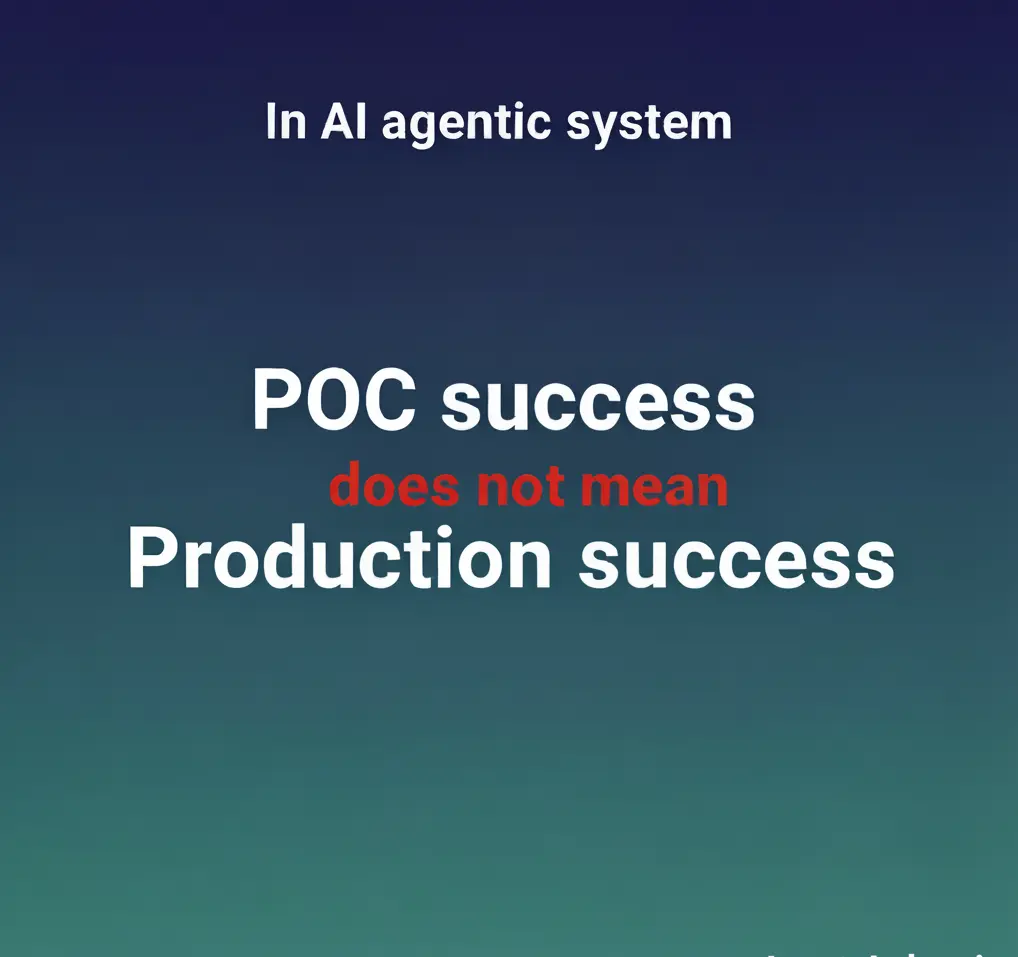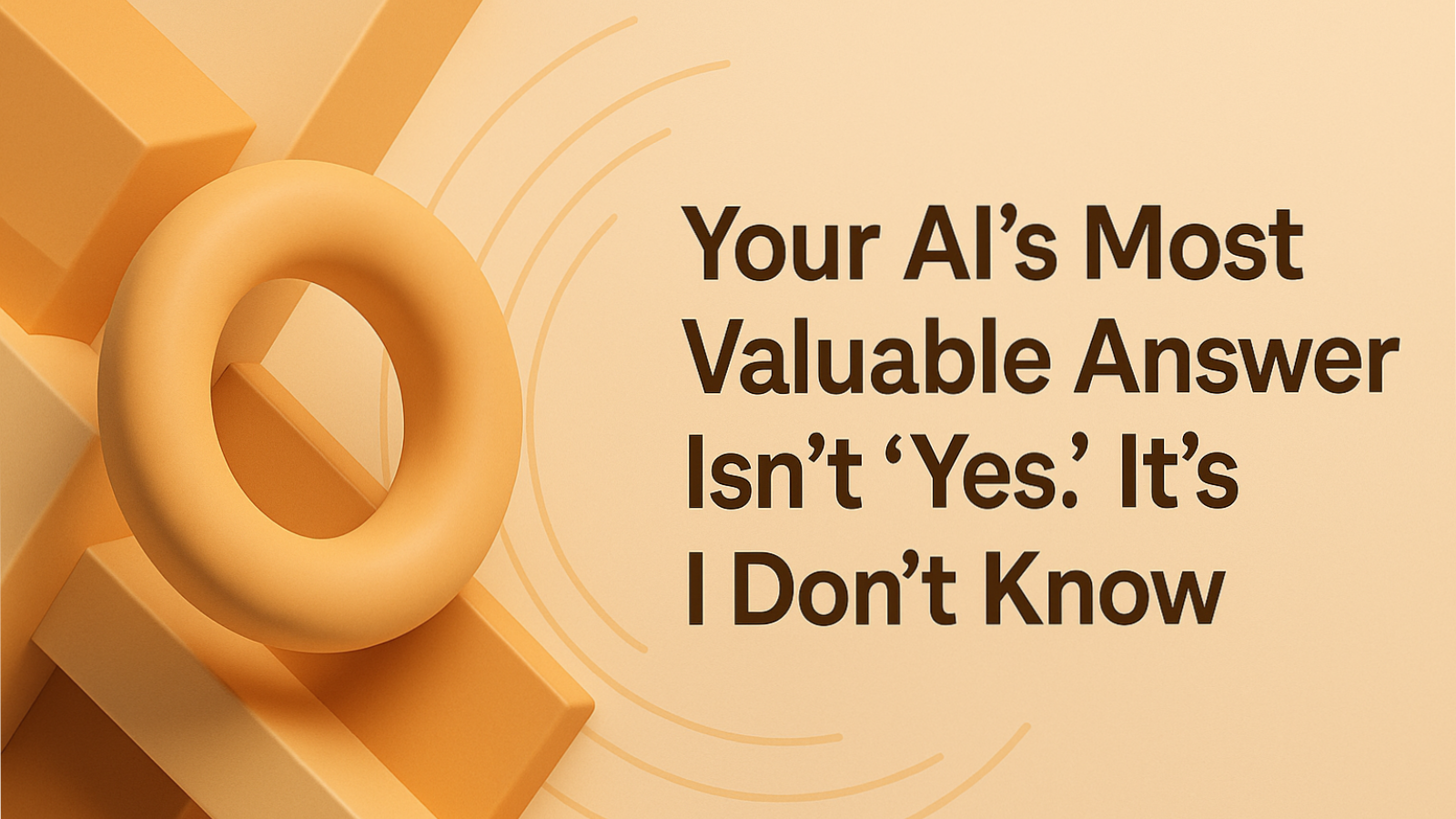
From Prototype to Production: Overcoming the Real Challenges of Deploying Generative AI Agents
Generative AI is revolutionizing the way we build intelligent systems. However, while many organizations succeed in building proof-of-concepts (POCs) or prototypes, only a small fraction manage to take these agents to full-scale production. In this blog, we'll explore the critical challenges that hinder the transition from POC to production and share how we at Avesta Labs address them effectively.
Why Most Generative AI Projects Fail to Reach Production
A recent report by MIT highlights a startling statistic: only 5% of generative AI projects make it from pilot to production. This low success rate raises an important question — why is it so difficult to deploy generative AI agents in real-world environments?
Let's break down the key reasons:
1. Non-Deterministic Nature of Generative AI
Traditional software systems are deterministic — they behave the same way every time given the same input. In contrast, generative AI agents are inherently non-deterministic. Their behavior can vary based on how they are prompted, and this unpredictability makes it difficult to test and validate them for production use.
2. Lack of Memory and Context Retention
One major limitation of current generative AI agents is their inability to retain memory. Without memory, agents cannot learn from past conversations or interactions. This leads to poor personalization and limits their ability to improve over time, making them less effective in production environments.
3. Rigid Integration with Enterprise Workflows
For AI agents to be truly useful in enterprise settings, they must integrate seamlessly with existing workflows and systems. If the agent architecture is not flexible enough to adapt to enterprise requirements, it becomes a barrier to adoption.
4. Absence of Feedback Loops and Analytics
As users interact with AI agents, their feedback should be captured and analyzed to improve the agent's behavior. Without a robust feedback loop, the agent cannot evolve or enhance its performance, which is crucial for long-term success.
Key Challenges in Scaling AI Agents to Production
To successfully transition from POC to production, organizations must address the following core challenges:
✅ Making Agent Behavior Predictable
Testing and validating the agent's behavior is essential. You need to ensure that the agent delivers consistent and reliable responses across different scenarios.
✅ Seamless Integration with Enterprise Workflows
The agent must be able to plug into existing enterprise systems without requiring major changes. Flexibility and adaptability are key to ensuring smooth deployment.
✅ Continuous Learning from User Interactions
The agent should be capable of learning from user feedback and retaining memory to deliver personalized responses. This enhances task completion rates and improves return on investment (ROI).
Our Approach at Avesta Labs
At Avesta Labs, we've developed a structured methodology to address these challenges and ensure that generative AI agents are production-ready.
Step 1: Deep Understanding of the Problem
Whenever we receive a request to build an AI agent, we begin by sitting down with the customer to understand the exact problem and the workflow they want to automate. This helps us define a clear problem statement.
Step 2: Define Agent Behavior and Requirements
We create an Agent Requirement Document that outlines:
- The problem the agent will solve
- The workflows it will automate
- The types of users it will interact with
We also define user personas to identify pain points and jobs-to-be-done.
Step 3: Agent Evaluation Framework
We design a comprehensive evaluation framework that includes:
- Expected questions users might ask
- Expected responses from the agent
- Multiple types of evaluations, including:
- Deterministic evaluations
- LLM-based evaluations for non-deterministic outputs
This ensures that the agent's responses are accurate, aligned, and contextually appropriate.
Step 4: Iterative Development and Testing
Once the agent is developed, we run evaluations to test its performance. Based on the results, we iteratively improve the agent's behavior until it reaches production-grade accuracy.
Step 5: Post-Deployment Feedback Loop
After deployment, we activate the second feedback loop:
- Observability and analytics track how the agent behaves with users
- We monitor for hallucinations, factual inaccuracies, and alignment issues
- Feedback is analyzed to generate new test cases and improve the agent further
This continuous improvement cycle ensures the agent evolves over time.
Beyond Development: Ensuring Production-Grade Readiness
To make an AI agent truly production-ready, we also address:
- AI Guardrails: Ensuring safe and compliant behavior
- Data Privacy: Preventing the sharing of personal information
- Security & Compliance: Meeting enterprise standards
- Agent Versioning: Managing updates and iterations
Our Platforms for End-to-End Agent Deployment
To support this entire lifecycle, we've built three specialized platforms:
1. Efficia – Agent Design & Development
This platform enables us to design and develop agents with precision, based on user needs and workflows.
2. Agent Analytics Platform
Captures user behavior, observability metrics, and feedback to complete the feedback loop and improve agent performance.
3. IngestIQ
Provides agents with access to enterprise data, allowing them to reference documents before responding. This significantly reduces hallucinations and improves response accuracy.
Final Thoughts: POC Success ≠ Production Success
Just because a generative AI agent works in a prototype doesn't mean it's ready for production. The journey from POC to production requires:
- Rigorous testing
- Seamless integration
- Continuous learning
- Robust feedback mechanisms
At Avesta Labs, we've built the tools and processes to make this journey successful — ensuring that your AI agents are not just smart, but also scalable, reliable, and production-ready.
Ready to build production-grade AI agents from day one?
Get your FREE AI Agent Strategy Session:
- Custom agent design consultation for your specific use case
- Production-ready architecture planning
- Technical roadmap and implementation timeline
- Risk assessment and compliance guidance
Build your AI agent the right way: hello@avestalabs.ai

Seasoned software engineer and AI strategist with over 13 years of experience. I specialize in building high-performance, secure cloud-native systems and crafting AI solutions that deliver real business value.


